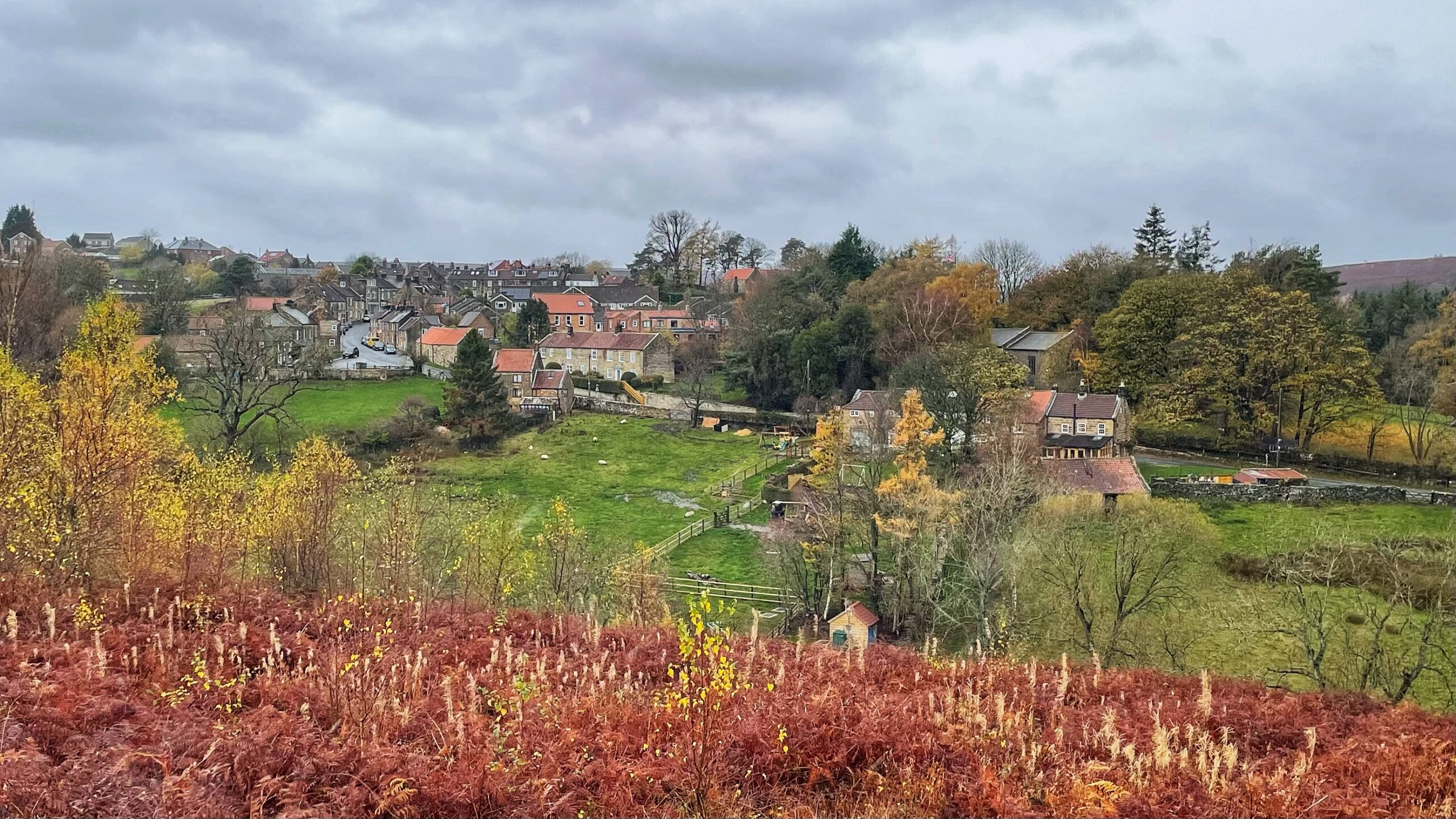I had been leafing through Joseph Ford’s “Some Reminiscences and Folk Lore of Danby Parish and District”, when one small passage stopped me in my tracks1Some Reminiscences and Folk Lore of Danby Parish and District by JOSEPH FORD. HORNE & SON LIMITED, WHITBY. 1953.. Ford described the steady trickle of those who slipped away from the Esk Valley in the nineteenth century, chasing whispers of a new life across the ocean. Among them was a widow, Zeborah Lincoln, living with her two or three grown sons in a weather-beaten cottage at the lower end of Castleton. When Ford wrote his account, the cottage still clung on at the head of Piper Lane, although by then it served only as shelter for cattle seeking shade in summer. The place itself will have been reduced to a footnote, yet its presence on the map was enough to set me off in search of it, like a moth fussing about the last glow of a dying fire.
So today’s photograph shows the bottom end of Castleton. Piper Lane hides beneath the trees, now merely a Public Footpath winding up from Danby Beck towards those cottages right of centre. One of those barns further right may well be the shell of Zeborah’s old home, although the truth lies buried beneath time and ivy. Behind the cottages, screened by more trees, stands the church of St Michael and St George. Its date of 1924 places it far outside Zeborah’s world, a reminder that the landscape has marched on, even if the stories cling stubbornly to the soil.
In the spring of 1837, Zeborah and her sons reached a turning point. Rumours from the “Golden West” had drifted into the dale, tales of free land and fresh beginnings for those brave or desperate enough to take the bait. Faced with the bleak prospects at home, they made the bold decision to leave Castleton behind.
Before they went, Zeborah held an auction near her cottage. It was a thin affair in terms of possessions, yet heavy as lead in mood. She had long been a cornerstone of village life, the steady hand at births, weddings, funerals and mishaps. The idea of her leaving, when she had scarcely set foot beyond Danby, Commondale or Westerdale, unsettled everyone. When the auctioneer brought down his hammer for the final time, it was more than a sale; it was the toll of a bell marking the end of something precious. The Lincolns may have been poor in coin, yet they possessed the drive and courage that the New World devoured with relish.
Their journey to Liverpool, and then across the Atlantic, was no weekend jaunt. It demanded stamina, patience and a resolve forged in the harsh winters of the dales. Still, rumours of land waiting to be claimed, especially in Canada, stirred the imaginations of young people and set many on the long road out of the valleys. A generation of dalesfolk soon found themselves carving new lives among the forests and lakes of Ontario, leaving traces of Eskdale in the names of their new settlements.
Zeborah was unusual only because she was a widow travelling with grown sons, but her reasons were much the same as everyone else’s. Local farms seldom changed hands unless one had money or influence, and neither was easy to come by. Young farmhands and young couples with little hope of securing a tenancy took the gamble that life abroad might offer more than the cramped prospects at home.
Their departure carried a certain romance, although it was of the sombre, hard-won sort. As Zeborah and her sons cast one last look at the landscape that had shaped them, they must have known that the view would not be theirs again. Most who left never returned, and the years swallowed their memories whole. A few fragments of their new lives might survive in an academic work that remains maddeningly out of reach, guarded by a price tag that would make a miser blush2Van Vugt, William E.. “10 Upper Canada”. Portrait of an English Migration: North Yorkshire People in North America, Montreal: McGill-Queen’s University Press, 2021, pp. 129-146. https://doi.org/10.1515/9780228006862-013.
Emigration gave the New World the workers it craved and fed the growth of young nations, enriching them in culture and spirit. Yet for those who watched neighbours vanish down the lane, it must have felt as though the valley itself were quietly emptying, one cottage at a time.
- 1Some Reminiscences and Folk Lore of Danby Parish and District by JOSEPH FORD. HORNE & SON LIMITED, WHITBY. 1953.
- 2Van Vugt, William E.. “10 Upper Canada”. Portrait of an English Migration: North Yorkshire People in North America, Montreal: McGill-Queen’s University Press, 2021, pp. 129-146. https://doi.org/10.1515/9780228006862-013

Leave a Reply